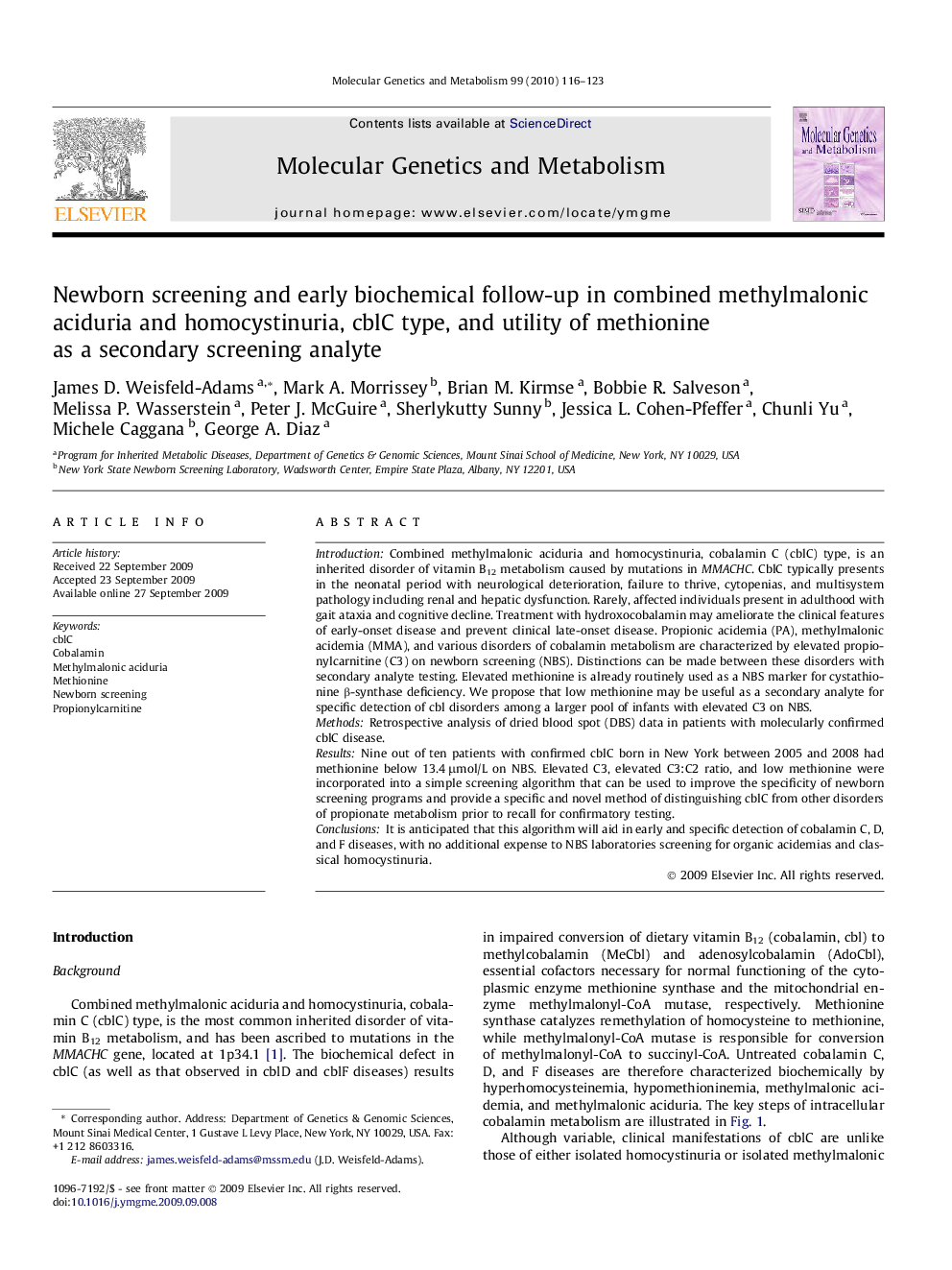| کد مقاله | کد نشریه | سال انتشار | مقاله انگلیسی | نسخه تمام متن |
|---|---|---|---|---|
| 1999652 | 1065868 | 2010 | 8 صفحه PDF | دانلود رایگان |

IntroductionCombined methylmalonic aciduria and homocystinuria, cobalamin C (cblC) type, is an inherited disorder of vitamin B12 metabolism caused by mutations in MMACHC. CblC typically presents in the neonatal period with neurological deterioration, failure to thrive, cytopenias, and multisystem pathology including renal and hepatic dysfunction. Rarely, affected individuals present in adulthood with gait ataxia and cognitive decline. Treatment with hydroxocobalamin may ameliorate the clinical features of early-onset disease and prevent clinical late-onset disease. Propionic acidemia (PA), methylmalonic acidemia (MMA), and various disorders of cobalamin metabolism are characterized by elevated propionylcarnitine (C3) on newborn screening (NBS). Distinctions can be made between these disorders with secondary analyte testing. Elevated methionine is already routinely used as a NBS marker for cystathionine β-synthase deficiency. We propose that low methionine may be useful as a secondary analyte for specific detection of cbl disorders among a larger pool of infants with elevated C3 on NBS.MethodsRetrospective analysis of dried blood spot (DBS) data in patients with molecularly confirmed cblC disease.ResultsNine out of ten patients with confirmed cblC born in New York between 2005 and 2008 had methionine below 13.4 μmol/L on NBS. Elevated C3, elevated C3:C2 ratio, and low methionine were incorporated into a simple screening algorithm that can be used to improve the specificity of newborn screening programs and provide a specific and novel method of distinguishing cblC from other disorders of propionate metabolism prior to recall for confirmatory testing.ConclusionsIt is anticipated that this algorithm will aid in early and specific detection of cobalamin C, D, and F diseases, with no additional expense to NBS laboratories screening for organic acidemias and classical homocystinuria.
Journal: Molecular Genetics and Metabolism - Volume 99, Issue 2, February 2010, Pages 116–123